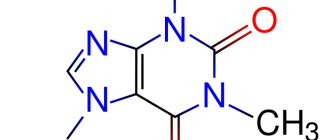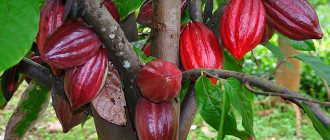Who invented instant coffee?
The invention of instant coffee is one of the brilliant inventions of the 20th century!
True, who exactly was the first in this matter is still not known. The first patent for instant coffee, number 3518, was registered back in 1890 by New Zealander David Strang, but then the product was not of interest to the general public. But in 1901, a similar discovery by the Japanese scientist Satori Kato, who lived in Chicago, gained popularity, and later the First World War contributed to this - the American military appreciated the convenience of storing and preparing instant coffee. But the official birthday of instant coffee is July 24, 1938. On this day, mass production of the first brand of instant coffee, Nescafe, began - this is how Nestlé helped Brazilian coffee producers get rid of surplus. The use of an evaporation method similar to the Satori Kato method was proposed by the chemist Max Morgenthaler, who worked on this problem for seven whole years, since 1931.
Instant coffee is prepared in seconds
History of appearance
Instant coffee has three creators. At different times, they put a lot of effort into developing the technology for its production.
- In fact, the idea of producing instant coffee appeared quite a long time ago, in 1899. Its first author was an American scientist with Japanese roots, Satori Kato. His original goal was to find a way to make instant tea. And this method was found. Then Kato decided to adapt it for coffee. This is how the first instant coffee appeared. The product turned out to be very successful and three years later it began to be produced on an industrial scale. It is interesting that instant coffee became mandatory for soldiers during the First World War. It became an integral part of soldiers' rations. But coffee beans were absolutely not suitable for this purpose. It had to be boiled, which was not possible in the field. He soon became very popular among soldiers and officers. Instant coffee powder was also issued during World War II. When peacetime came, this invention quickly entered peaceful life. Coffee lovers quickly appreciated all its benefits.
- Instant coffee first entered the world market in 1909. It was called "Red E Coffee". This was the merit of another scientist. The English inventor George Constant Washington lived in Guatemala at the time. Quite by accident, he noticed that condensation in the form of tiny coffee powder remained on the silver spoon that he took out of the cup of coffee. It was this coffee dust that gave him the idea that it was possible to create an instant version of everyone's favorite coffee.
- There is another important date in the history of instant coffee - 1938. This year became the official date of birth of the instant coffee option. It is still celebrated today. The fact is that this year Brazil had an amazingly generous coffee harvest. Despite the huge sales volumes, there were still surpluses. Coffee beans are a perishable product. When stored, they quickly lose their aromatic substances. Therefore, the problem of what to do with the surplus became extremely acute. Here, a chemist from Switzerland, Max Morgenthaler, came to the aid of the coffee magnates. It is he who is now respectfully called the father of instant coffee. He proposed obtaining a soluble powder by extraction. So Morgenthaler invented instant coffee. But his brainchild did not immediately gain popularity. Coffee connoisseurs felt that the drink made from such powder was unaromatic and without a distinct taste. By the way, they were right. Due to the fact that coffee is exposed to high temperatures, it loses a lot of aromatic oils and other beneficial substances. The final product is obtained without a pronounced taste and enchanting aroma. But the surplus still needed to be processed somehow, and the Nestle company began producing instant coffee using Morgenthaler technology. This is how the Nescafe brand was born. Now it has gained enormous popularity, but in those early years it seemed that the idea was doomed to failure.
Oddly enough, the Second World War brought instant coffee real popularity. The soldiers really appreciated him. They received instant coffee as part of their rations. It brewed quickly, infused instantly, and the soldiers received a hot and quite aromatic drink with the taste of coffee. At the front he was quickly appreciated and loved. American soldiers have become real fans of this convenient product. When the war ended, it was they who brought instant coffee into civilian life. It first gained popularity in the United States, and then quickly spread throughout the world. Thus began the triumphant march of instant coffee around the world.
How is instant coffee made today?
Many people think that instant coffee is synthesized by chemists in scientific laboratories or prepared from the poorest quality beans. It's not like that at all!
Instant coffee comes in powdered, granular and freeze-dried forms . At the first stage, to produce any of these types of coffee, high-quality coffee beans are used, which are cleaned, roasted and crushed. Then the ground coffee is poured with hot water in containers under pressure, that is, “boiled,” and a rich extract with a high concentration of flavoring and aromatic substances is obtained, for which we love coffee drinks so much. The resulting extract is cooled, filtered to remove resinous and insoluble substances, sprayed and simultaneously dried using a stream of hot air. Powdered coffee is ready!
To obtain granulated coffee, coffee powder is simply molded into granules using steam. This process is called agglomeration.
The technology for producing freeze-dried coffee is a little more complicated, which is why it costs more than granulated and powdered coffee. The resulting coffee extract is dried using not hot air, but... ice! This process is called sublimation drying (or freeze dry): the extract is frozen and at a temperature of minus 50 degrees, excess moisture is removed from it using a vacuum. The frozen mass is crushed and coffee crystals are obtained. By the way, good freeze-dried coffee dissolves in hot water without a trace in just a few seconds.
Granulated coffee
Manufacturing technology
In order to obtain any of the varieties of instant coffee, the raw materials must go through three stages of processing.
- Initially, the coffee beans need to be checked, roasted and crushed. When crushing, fragments are obtained that are much larger than with regular grinding at home or in a cafe.
- At the second stage, the crushed raw materials are boiled in special tanks until a very viscous concentrate is obtained, in which the caffeine content is simply enormous.
- The final stage is the most interesting from a technological point of view, since it is at this stage that the liquid fraction turns into dry matter.
Currently, there are three methods for drying the extract, resulting in a powder, granules or freeze-dried product.
- Sublimation or freeze dried - drying by freezing. This process is most interesting compared to other options, since here the frozen concentrate is dehydrated, bypassing the melting and boiling stages. This technology significantly increases the cost of the final product, but at the same time it allows for better preservation of all components of the extract.
- Powdered instant coffee appeared much earlier than its more “advanced” versions. Its production involves spraying a liquid concentrate in a stream of hot air, as a result of which the liquid component instantly evaporates from the suspension, and the residue turns into powder.
- A granular (or agglomerated) product is obtained from a powder moistened with water, aggregating its grains into larger elements (granules). This form of the product has exactly the same taste and aroma characteristics as powdered coffee, but is much more convenient to use. After all, unlike powder, granules do not stick to dishes.
Properties of instant coffee
Is instant coffee good or bad? And is it true that synthetic additives can be added to it? The fact is that during the production of instant coffee, flavoring and aromatic substances may be somewhat lost, so coffee oils and flavorings can be added to it. In instant coffee from a reliable manufacturer you will not find any artificial colors or preservatives.
Instant coffee contains half the of caffeine This substance is a natural stimulant, activates the work of many body systems, improves brain activity and speeds up metabolism. Caffeine in small doses is harmless and does not increase blood pressure; on the contrary, due to the diuretic effect of caffeine, coffee can lower blood pressure.
Instant coffee also contains phenolic compounds - natural antioxidants that fight the destructive effects of free radicals, prolonging the health and youth of cells and preventing the development of many diseases.
The main advantage of instant coffee is that the drink is prepared in seconds. Moreover, from instant coffee you can prepare not only hot, but also cold coffee drinks. For example, the extremely trendy Dalgona coffee.
What, what, what is our coffee made from?
In the modern world, with a large selection of alternatives, when making this or that decision, a person always wants to know as much as possible about the chosen product.
But very few of us have thought about what instant coffee consists of. Of course, you will answer from the grains, but what kind of processing have they undergone? Is it harmful to drink instant drinks? Isn't it a chemical composition? What does the drink you pass off as coffee consist of? These and many other questions have plagued coffee lovers since the 1930s. Let's try to sort out these issues and turn our attention to the large concerns that produce coffee. The process of converting grains into an instant drink takes place at their enterprises. The first stage of producing such coffee is very similar to standard brewing, only on a production scale. So, first the grains are fried, and then they are doused with boiling water, after which they begin to dry. Thus, we were able to answer the question of what instant coffee is made from; naturally, it consists of beans of the plant of the same name, and not of harmful chemical additives. This is where all the fun begins. Depending on the method of drying the beans, instant coffee can be freeze-dried, powdered or in granules.
Dalgona coffee
Dalgona coffee became popular a few months ago in Korea, and then throughout the world. Jung Il Woo, an actor and host of the TV show “Celebrity Chef” at one establishment, ordered “whipped coffee” and, after tasting it, admired the taste and texture. The actor said that this coffee reminds him of toffees from his childhood, which were called Dalgona. A couple of drops of orange blossom (orange blossom water) is very suitable for this coffee.
Dolgona coffee
Ingredients (one serving):
- 1 tbsp. l. good instant coffee granules
- 1–3 tsp. fine sugar
- 150 ml whole milk
What to do:
Pour instant coffee with sugar into a bowl, pour in 1 tbsp. l. boiling water and grind the mixture with a hand whisk or beat with a mixer until you get a thick light foam that practically does not fall from the whisks. Heat the milk, pour it into a large glass or glass, spoon out the coffee mixture and serve immediately with a spoon or straw.
Advantages and disadvantages of instant composition
The main advantage of instant coffee is the simplicity and speed of preparation. It does not need to be ground or boiled. This is important for people who don't have time for the ceremony. Instant coffee has the same effect on the human body as natural coffee: it increases heart rate, increases blood pressure, and promotes the flow of oxygen to the brain and internal organs.
The advantages of this drink are obvious:
- helps to cheer up,
- speeds up metabolism;
- stimulates the body's excretory functions;
- unpretentious in storage;
- easy to prepare;
- affordable;
- contains less caffeine.
The disadvantages of instant coffee include the content of preservatives. No matter how hard manufacturers try, it is impossible to create a drink identical to natural without biological additives. Therefore, instant coffee:
- negatively affects the gastrointestinal tract;
- worsens skin condition;
- flushes vitamins from the body;
- with frequent use, it disables the nervous system.
Similar disadvantages can be attributed to other types of coffee. Even a natural product must be consumed with caution.
How to prepare the most delicious and healthy drink from high-quality instant coffee in Russia
In order for the drink to retain all its beneficial properties, you must adhere to some rules:
- Brew exceptionally high quality coffee. It is best to use the freeze-dried version.
- Use hot, but not boiling water.
- Buy a good cup with thick walls.
How and what is a quick drink made from?
If the composition of instant coffee is indicated on the packaging, then its recipe is carefully hidden by the manufacturers. And yet, sometimes representatives of the coffee industry reveal the secrets of the factory “behind the scenes”.
Compound
The product is made from green beans of the Robusta and Arabica varieties. Cheap instant coffee is often produced from affordable robusta. But this variety is often found in the middle category. It has a higher caffeine content, which is lost during processing. In addition to the pure composition, they often make a mixture of Arabica and Robusta.











